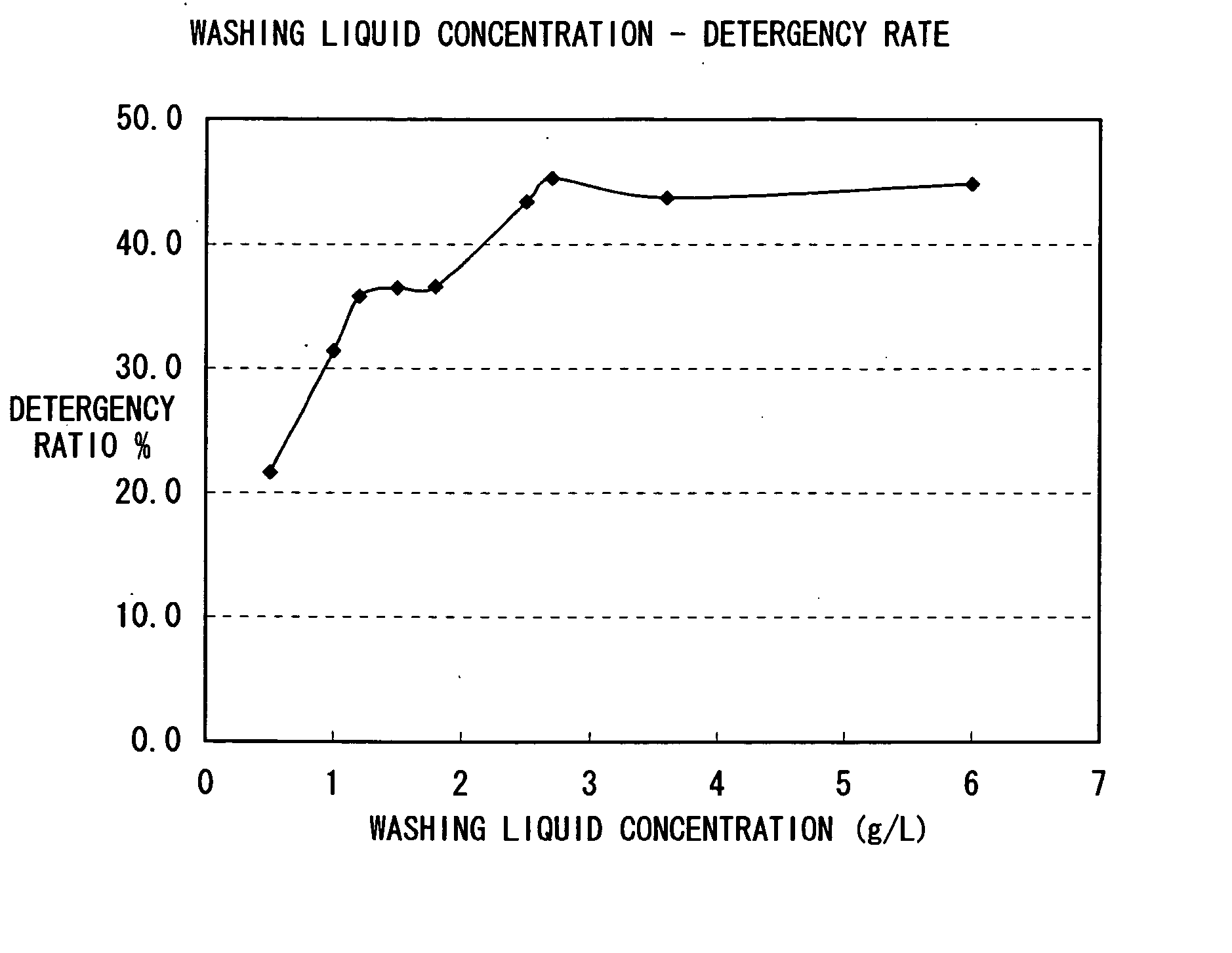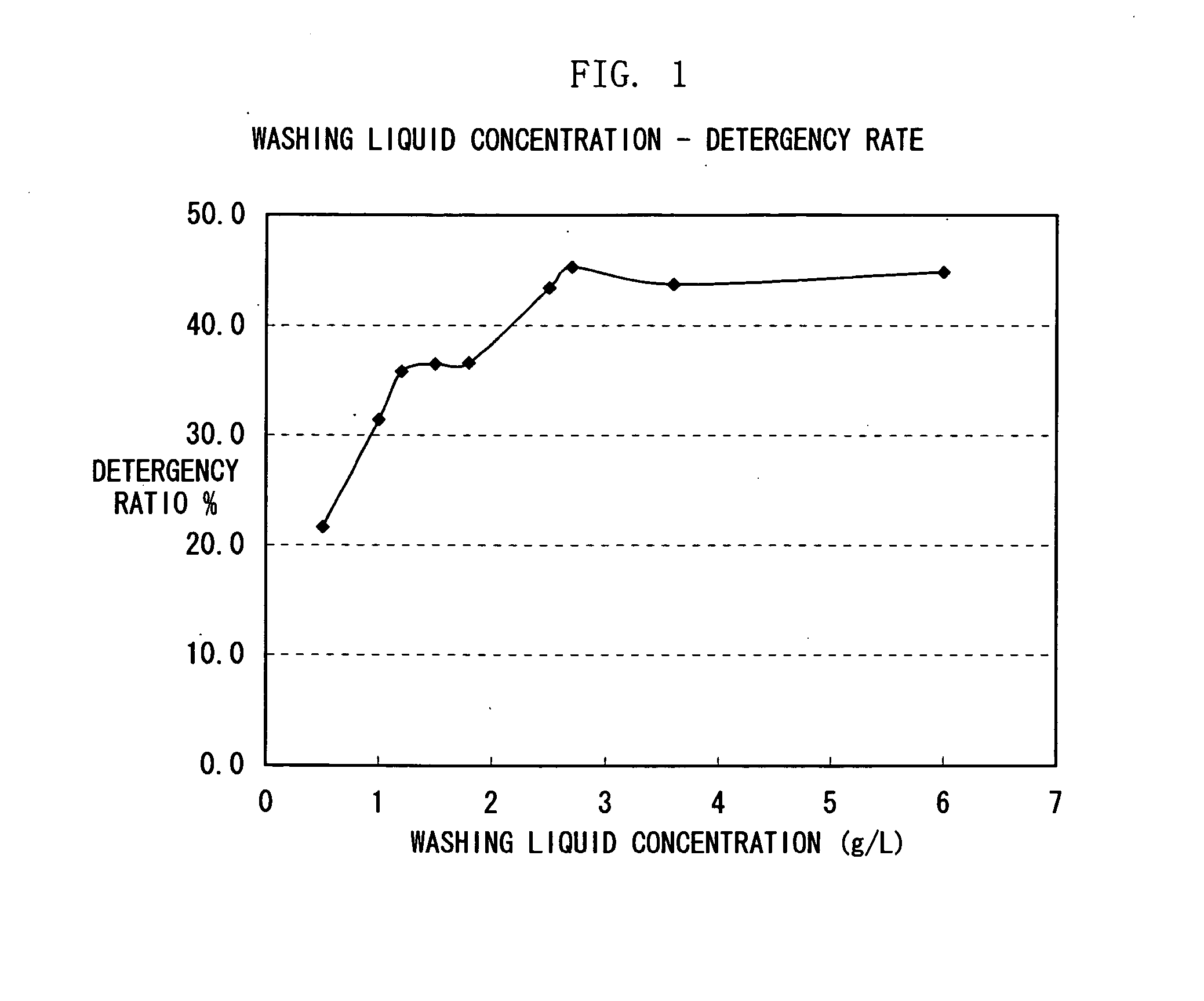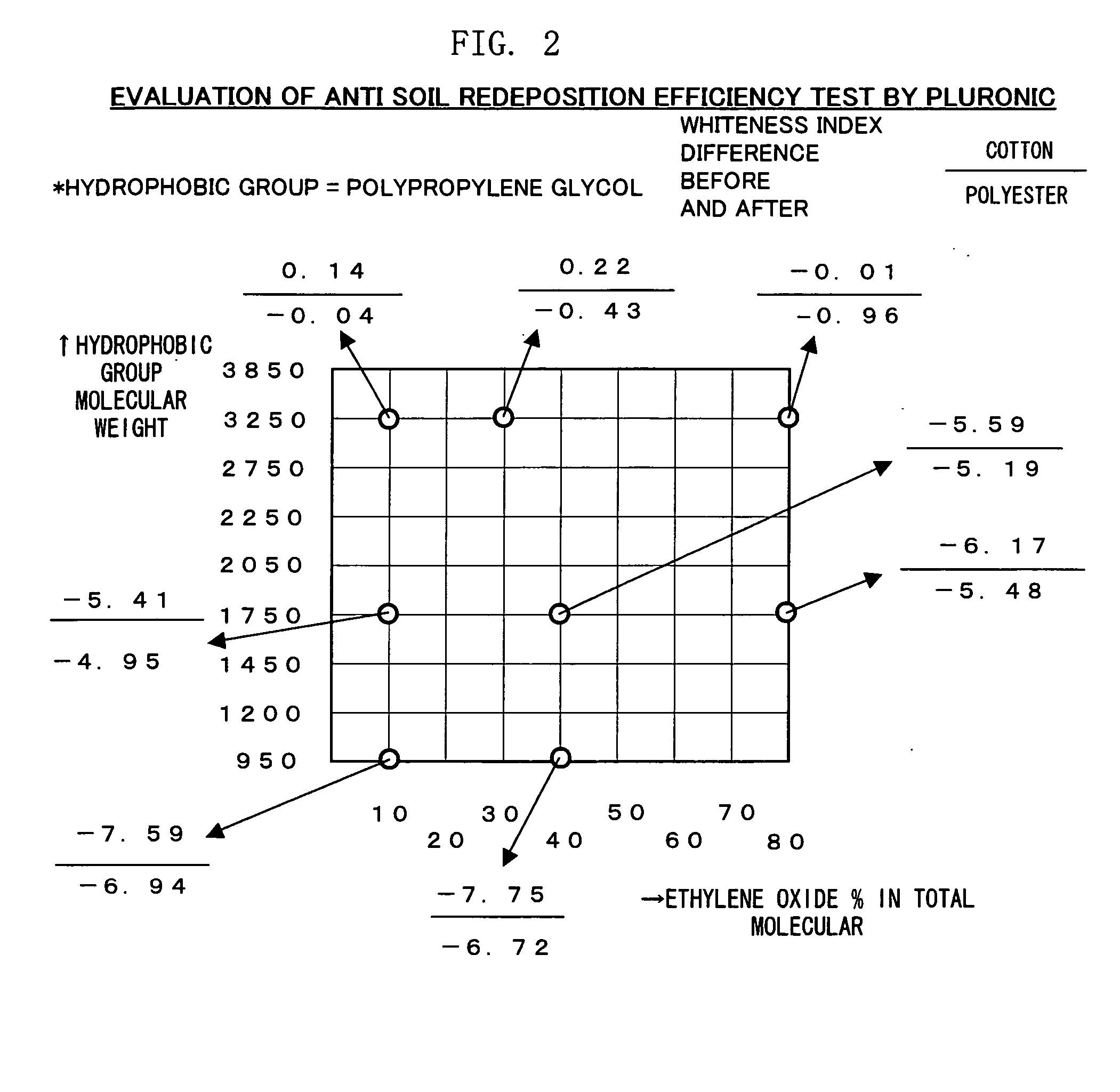Method of laundering clothes and detergent composition therefor
- Summary
- Abstract
- Description
- Claims
- Application Information
AI Technical Summary
Benefits of technology
Problems solved by technology
Method used
Image
Examples
example 2
[0125] A washing liquid having a detergent concentration of 1.82 g / L and a pH of 10.6 was obtained by dissolving a total component amount of 56.4 g of detergent having a respective component composition of 16 g of sodium hydrogen carbonate, 40 g of sodium metasilicate (9 hydrate), 0.2 g of methyl cellulose and 0.2 g of polyvinyl alcohol in 31 liters of tap water. The detergency ratio of the respective stained fabrics was measured before and after washing with the washing liquid. The results are shown in Table 15.
example 3
[0126] A washing liquid having a detergent concentration of 0.85 g / L and a pH of 10.3 was obtained by dissolving a total component amount of 26.4 g of detergent having a respective component composition of 18 g of sodium carbonate, 8 g of sodium hydrogen carbonate, 0.2 g of methyl cellulose and 0.2 g of polyvinyl alcohol in 31 liters of tap water. The detergency ratio of the respective stained fabrics was measured before and after washing by using the washing liquid. The results are shown in Table 15.
example 4
[0127] The detergency ratio of the stained fabric was measured in the same way as in example 1 except for further adding and dissolving 0.3 g of protease and 0.1 g of cellulose as enzymes and 0.6 g of sodium sulfite as a reducing agent, respectively to the washing liquid in example 1. The results are shown in Table 15.
PUM
 Login to View More
Login to View More Abstract
Description
Claims
Application Information
 Login to View More
Login to View More - R&D
- Intellectual Property
- Life Sciences
- Materials
- Tech Scout
- Unparalleled Data Quality
- Higher Quality Content
- 60% Fewer Hallucinations
Browse by: Latest US Patents, China's latest patents, Technical Efficacy Thesaurus, Application Domain, Technology Topic, Popular Technical Reports.
© 2025 PatSnap. All rights reserved.Legal|Privacy policy|Modern Slavery Act Transparency Statement|Sitemap|About US| Contact US: help@patsnap.com



